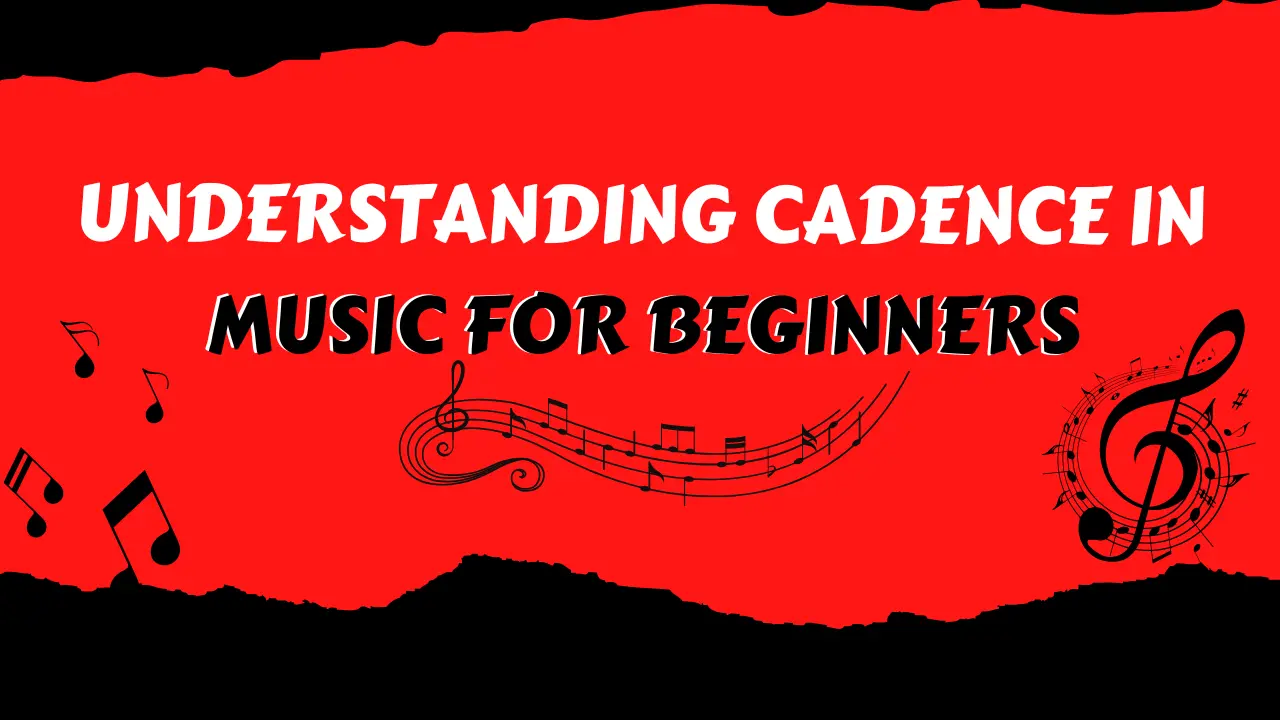- Cadence Definition In Music Theory
- What Are the 4 Types of Cadences in Music?
- Perfect Cadences
- Imperfect Cadence
- Plagal Cadences
- Deceptive Cadence
- Cadences in Different Genres of Music
- Cadence In Classical Music
- Cadence In Jazz Music
- Cadence in Pop Songs
- Why do we Need Cadence in Music?
- How to Identify a Cadence?
- FAQs
Cadences in music are a simple yet a very important concept. It gives a sense of completion or a resolution to a melody or even a phrase in music. Let’s explore the importance of it along with Cadence definition in music theory and its types.
Cadence Definition In Music Theory
Cadences can be defined as a use of two chord progression to end a musical phrase or a melody or a harmony section. It’s a musical concept that marks an end to a composition and gives a sense of closure or completion to the listeners. This help a lot organizing the structure of musical pieces, why the entire flow of music. There are five types of cadences in Music.

Did You Know?
Music composers used cadential formulas during Baroque and Renaissance periods which are still in use.
What Are the 4 Types of Cadences in Music?
Cadences are divided into 4 types based on their harmonic progressions. Those are Perfect, Imperfect, Plagal and Deceptive, which explained detailed in below Usually, roman numerals denoting the chords, are used to mark cadences in music
Perfect Cadences
This provides resolution to sections of a music using chord progressions from V (dominant) to I (tonic) chord. Perfect cadences will have a definite and a strong sense of conclusion. And so it is called an authentic cadence in classical music. My teacher gave me the Authentic cadence explanation on how it has a significant role in creating closure with help of music theory.
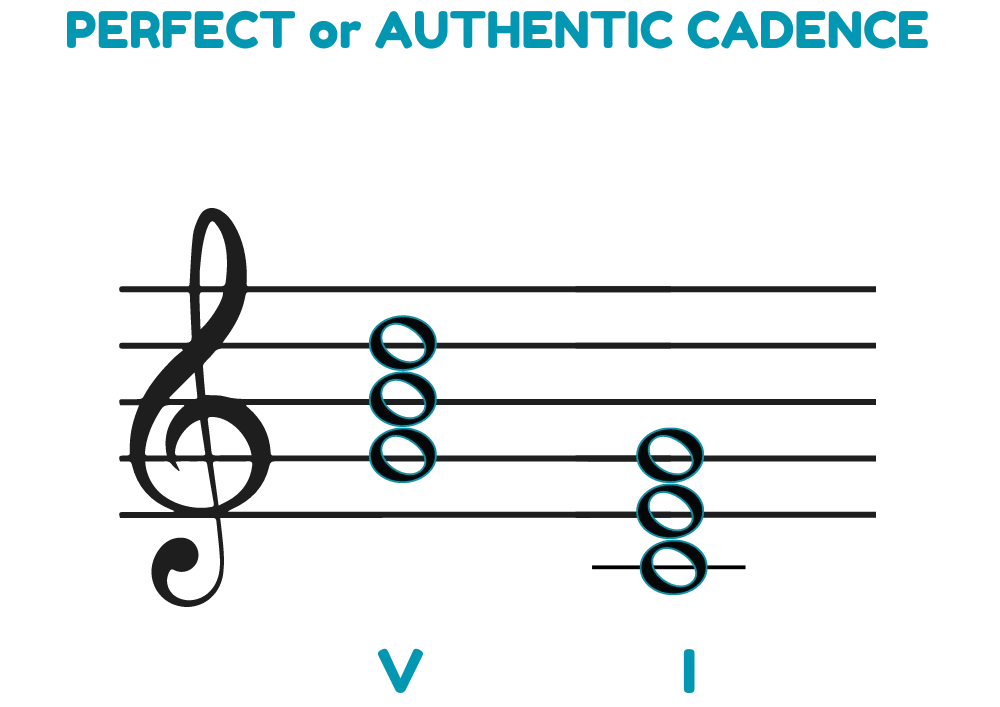
The image illustrates a Perfect cadence example in the key of C. Notice that the chords end from G (v) to C (i). This sounds more natural and satisfying to listen to. It is mostly used in music than the rest of the cadence types.
Imperfect Cadence
Imperfect cadences happen when a phrase or a section of a musical piece ends with a dominant chord (v) from tonic (i). It is also called Half cadence which creates a sort of incomplete feel since it ends on a dominant chord. Usually the ends of any musical piece will not have this as it provokes an anticipation. These are used to delay the ending by the composers.
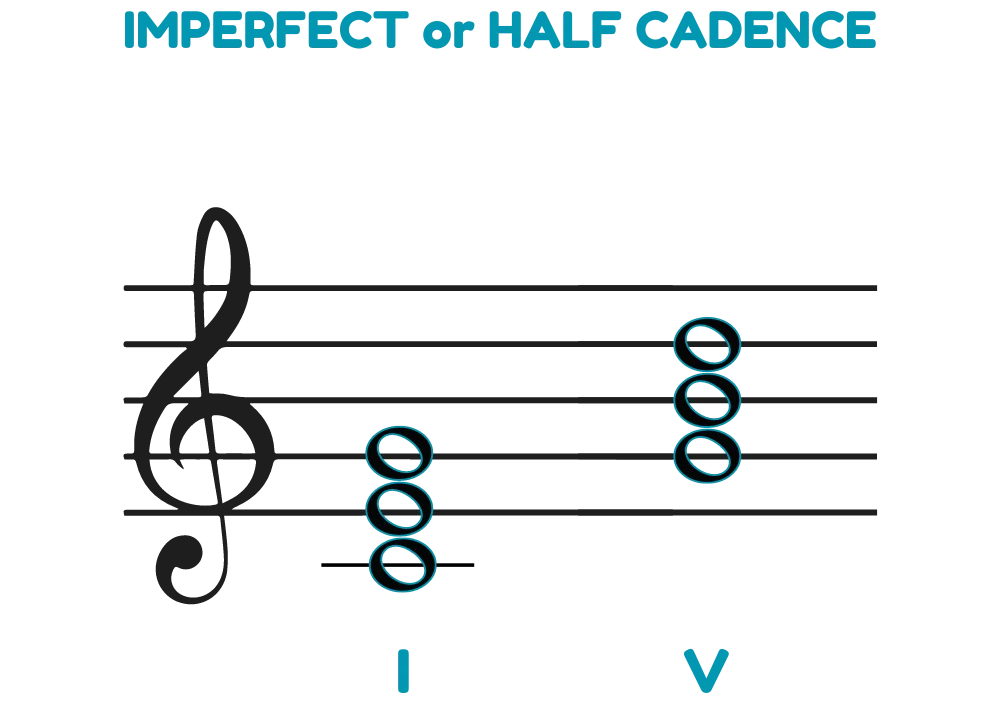
Imperfect cadences create tension and break the sense of continuity. For instance, the vocals bit in “Before He Cheats” by Carrie Underwood, ends with an imperfect Cadence.
Plagal Cadences
In music theory this cadence uses progression from subdominant (iv) to tonic chord (i). Both plagal and perfect cadence ends on tonic but unlike perfect cadence(strong sense of ending), plagal creates a subtle sense of resolution. It is also referred to as Amen cadence. It’s used when the composers want to convey a taste of solemnity or a sense of peacefulness.
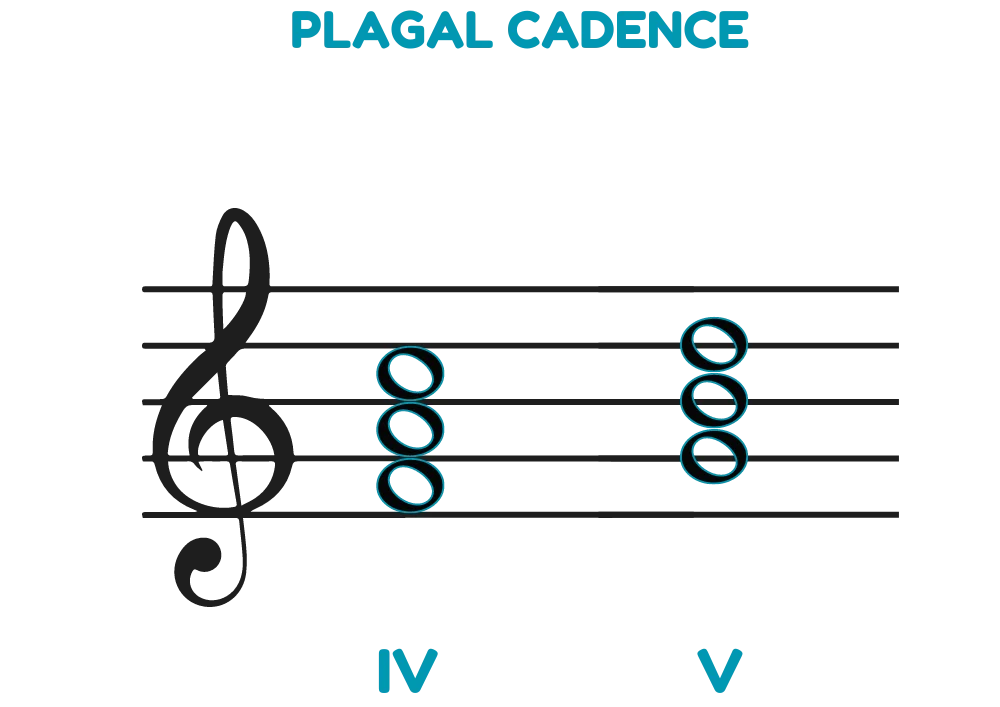
For instance, imagine that a piece is in the key of C major. Plagal cadence will use the chord progression from Subdominant (iv) ie, F major (F-A-C) to tonic (i) ie, C major. It’s mostly used in gospel music.
Deceptive Cadence
When composers want to give an unexpected resolution by leaving an element of surprise or intrigue deceptive cadences is been used which defies the expectation of a satisfactory ending by ending with an unexpected chord rather than a dominant or tonic chord. This usually end with submediant(vi chord) from dominant.
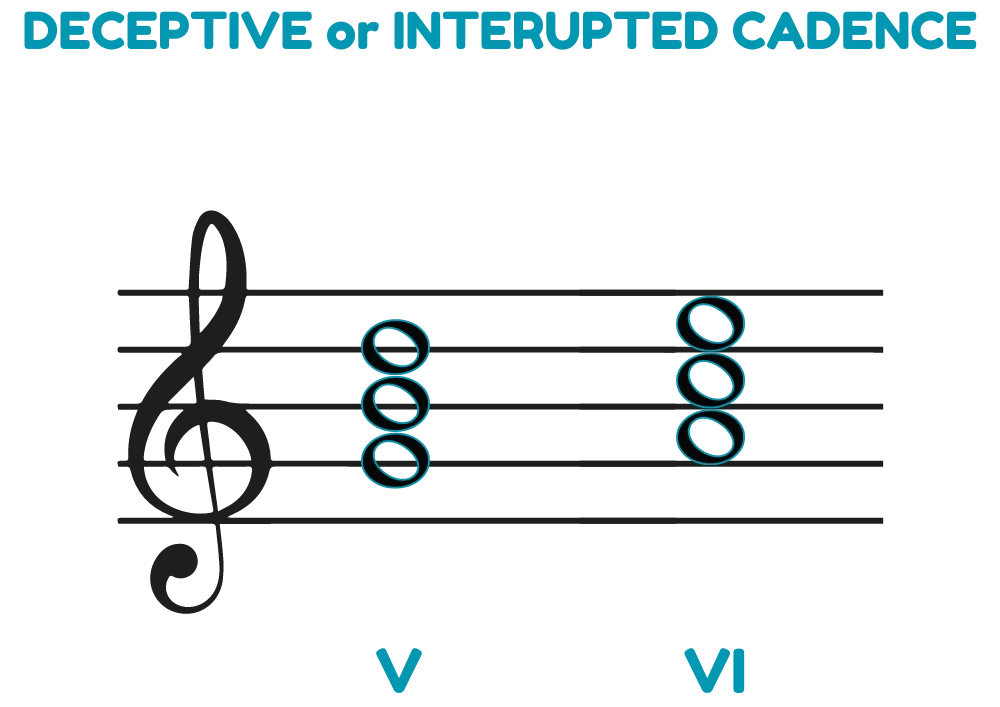
The measure in the image is in C major and illustrates the resolution given deceptive cadence from dominant chord (v) to mediant (iii) ie, Em (E-G-B) or submediant (vi) ie, Am (A-C-E). Deceptive cadences add more drama or complexity or a feel of confusion to the ending!
Cadences in Different Genres of Music
Like I said, cadences play an important role defining the flow of a piece of music. It makes an impact on different genres in music.
Cadence In Classical Music
It is quite apparent that classical music uses a lot of perfect cadences. The progression from v th chord to tonic chord. It creates a stronger sense of completion because classical pieces have many movements and it is vital that each movement is concluded properly and apparently. Most of Baroque compositions have perfect cadences
Imperfect cadences in classical music are also prevalent. The conclusion of a section or phrase on the 5th or the dominant chord. It creates a touch of anticipation with a temporary pause.
The most famous “Hallelujah Chorus” by Messiah uses plagal cadence at the end of the peace.
Deceptive cadences in classical music can be seen in the compositions of the romantic era.
Cadence In Jazz Music
Jazz music uses types of cadences in music for harmonic movement including perfect cadence (dominant to tonic). These are called turnaround. Turnarounds are the chord progressions that return to the starting chord of the progression.
This cadence in jazz music adds to the genre’s improvisational quality.
Cadence in Pop Songs
Contemporary music uses cadences to make the pacing move. You may notice that perfect cadences (v-i) are usually used to conclude verses, choruses to let the listeners have the satisfaction that the section has concluded. For example the chorus section of Adele’s “Someone Like You.” It concludes with a perfect cadence.
Imperfect cadences bring out a touch of anticipation and lead its listeners into the next movement of the song. Listen to “Shape of You” by Ed Sheeran. Many phrases ends with imperfect cadences
You may also notice that popular music uses deceptive cadences more often to mark an emotional depth. Listen to “Someone You Loved” by Lewis Capaldi. it uses the submediant (iv chord) as it slides into “Now the day bleeds..”
“Let it Be” by The Beatles is a perfect example of plagal cadence (1v-1).
Why do we Need Cadence in Music?
Cadence is a requirement in music. Without this concept, listeners cannot make out if a piece of music has ended or not. It would feel incomplete. Let’s look at the reasons why knowing different types of cadences in music are an absolute requirement.
- At least two chords used at the end of a piece of music is the Cadence in music theory. This provide a point of resolution and beginning in any musical phrase.
- There can be many movements in a composition. Cadences are used as an element to display differentiation and direction between these arrangements.
- Cadences are frequently used to signal the conclusion of a musical phrase or section. They function similarly to a punctuation mark in written language in that they indicate to the listener when a musical notion is finished.
- Various types of cadences in music communicate various expressions. For instance, a deceptive cadence (V-vi) can evoke a sensation of surprise or suspension, but a perfect true cadence (V-I) usually sounds final and decisive.
- The progression of harmonics depends heavily on cadences. They set the music’s tonality, or key, and lead the audience through shifts in harmonic tension and relaxation.
How to Identify a Cadence?
Look for a specific chord progression in the given piece of music. A Perfect cadence will have chord progression from dominant(v) to tonic(1) while an Imperfect cadence will have chord progression from tonic(1) to dominant(v). Plagal and Deceptive cadences will have chord progression from sud dominant(iv) to tonic(1) and dominant(v) to submediant(vi)
Moreover, understanding where cadences can occur in a musical piece can help you identify the type of cadence in music. These are often found at the end of a phrase, or a section or a movement of a musical piece.
Knowing what is cadence in music theory can also help you understand the mood or the impact it can make which in turn makes it easier for you to identify a cadence.
Learning these concepts can be a difficult task, MUSICMASTER.IN makes these tasks absolutely easy and fun with its experienced tutors. Book a free western music class demo with us today
FAQs
What are the different types of cadences in music?
The different types of cadences in music are prefect(v-i), imperfect (1-v), plagal (iv-v) and deceptive cadence(vi-v).
How do you identify a cadence in music?
You can identify a cadence in music by identifying the type of chord progression a piece of music ends with.
How to use cadences in music composition?
Use a variety of kinds to manage harmonic tension and emotional effect, improving the structure and flow in music composition with the help of cadence resolution.
What are some common cadences used in popular music?
Perfect, imperfect, plagal and deceptive are the common cadences used in popular music.
What is the difference between a perfect cadence and an imperfect cadence?
Perfect Cadence moves from dominant chord to tonic (v-i) while imperfect cadence moves from tonic to dominant chord (1-v).
How do composers use cadences to create tension and release?
Composers create or release tension by selecting types of cadence in music such as perfect or misleading, which guides harmonic resolution.
What are Perfect cadence examples?
The best known Perfect cadence example is twinkle twinkle little star nursery rhyme.
Related blog: Dynamics In Music

